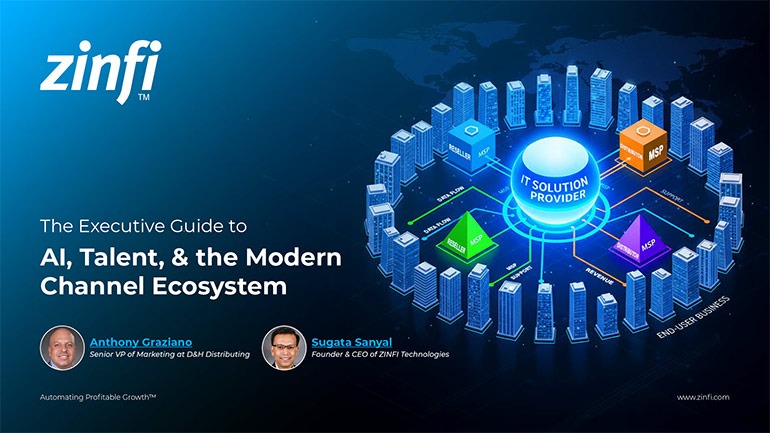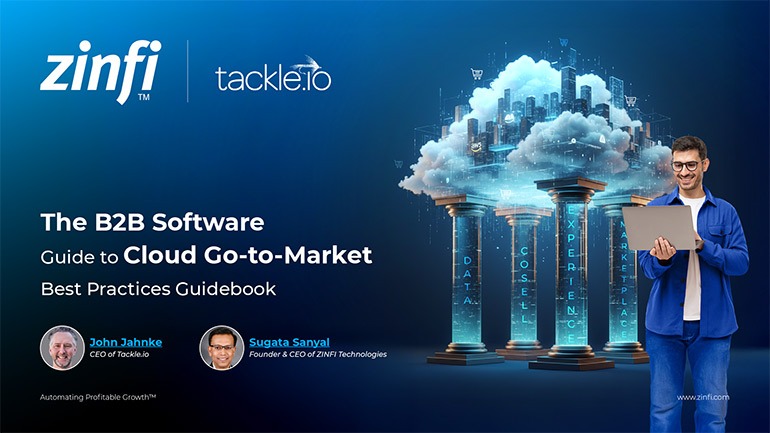Best Practices Articles

3 Macro Trends That Could Put Your IT Channel Partners Out of Business
The Information Technology Channel Partners has gone through three profound changes over the four decades or so of its existence. The first was the channel’s transition from being largely white box resellers to a more organized computer retail model. During this first phase, anyone with some cash and a lot of enthusiasm could build a personal computer. Remember the days of Computer Shopper?
The next wave arrived with the advent of networking and the Internet in the late Eighties/early Nineties. This change drove several white box resellers out of business, propelled by the emergence of worldwide vendors like Dell, Compaq, HP, Toshiba, etc.
The third and the last wave primarily started in the mid 2000s when a set of network management and monitoring tools burst out onto the market, allowing resellers to evolve into service providers and ultimately created a new breed, managed service providers. The recession of 2008 sparked further change for many channel partners. Large numbers of service providers closed their doors in the face of the increasing complexity of the technology. This required higher levels of competence, and exposed a severe shortage of technical talent. Difficulties in recruitment, development and retention became a major issue for the channel, while business remained choppy largely due to lack of sales and marketing skills.
We at ZINFI have heard this story so many times that for the past year or so we have been talking to channel partners in an attempt to identify what and when will be the next wave. We have also undertaken a worldwide survey on this topic with about five thousand channel partners of various large vendors. The big picture answer is that we are now in the middle of another major channel shift. And the shift is, as we’d expect, as a direct result of the rapid evolution of cloud and cloud-based offerings. This shift towards the cloud has three profound implications for the channel:
- Where end-users work- In most countries the numbers of remote workers are growing, though of course at varied rates. The widespread adoption of Bring Your Own Device (BYOD) policies is now integrated with ‘work from anywhere, anytime’ culture. Setting aside highly sensitive assets (like manufacturing, security, or healthcare), most general-purpose infrastructure is now accessed by business users remotely. This trend has clearly been driven by three underlying technology factors: an abundance of bandwidth (both land and cellular), an exponential reduction in data storage costs, and the rapid evolution of web-based applications.
- What and how the infrastructure is changing - Fundamental changes in data center architecture, the emergence of software defined networking, and proliferation of triple play (voice-video-data) convergence at end points have radically changed the way the overall network topology looks today. This doesn’t even address the profound shift that is being driven by web services infrastructure offerings from organizations like Amazon Web Services, HP Services, Microsoft Azure, Salesforce Developer Platform, and plethora of smaller data centers powered by cloud services platforms from Red Hat, Citrix, VMware, and others.
- How they are supported - With the proliferation of hacking and major security breaches – a surprising number of which are initiated by government agencies with deep pockets trying to break into the networks of companies, organizations and other governments - the need for a robust infrastructure is even greater, and the skill levels required not only to support remote workers, but also to protect network assets, are almost impossibly high. This is leading towards intense vertical specialization in the channel, because solutions are increasingly domain-specific: think healthcare, retail, hospitality, insurance, or finance. A lot of what used to be outsourced to external providers is now insourced due to availability of various network monitoring management capabilities from vendors like HP, Dell, SolarWinds, Splunk, etc. *
These three macro drivers have significant survivability implications for IT solutions providers today, and have already started to drive deep changes in the channel.
With that said, there are ways to push back against these challenges and help reverse what might otherwise be an inevitable decline for many of your partners. If you want to help your partners stay in business and be profitable, you should certainly provide the right channel marketing automation infrastructure and concierge support, but staying relevant to your partner base takes more than just channel automation software and services. You need to understand the risks they face and how to guide them through on a path to mutually successful conclusions.
* Note: The reference to other vendor platforms is not an intent to promote one vs. the other but to illustrate with a few real examples. We are very fortunate to have many of these clients as our customers and sincerely thankful to them for allowing us to be part of such an incredible change that they are driving on a worldwide basis to create opportunities for many.
Best Practices Guidebook
 Modernizing Channel Marketing: AI and Ecosystem Enablement Best Practices
Modernizing Channel Marketing: AI and Ecosystem Enablement Best PracticesDownload for FREE
 The Channel’s Shift to Partner-Led With AI Best Practices
The Channel’s Shift to Partner-Led With AI Best PracticesDownload for FREE
 Hyperscalers, ISVs, and AI: Shaping the Future of B2B Software Distribution
Hyperscalers, ISVs, and AI: Shaping the Future of B2B Software DistributionDownload for FREE
 Definitive Guide to a Partner Ecosystem-First Sales Strategy
Definitive Guide to a Partner Ecosystem-First Sales StrategyDownload for FREE
 The Partner-Led Digital and AI Transformation Best Practices
The Partner-Led Digital and AI Transformation Best PracticesDownload for FREE
 Startup Talent Recruitment: Hiring Missionaries, Not Mercenaries
Startup Talent Recruitment: Hiring Missionaries, Not MercenariesDownload for FREE
 The Future of Partner Relationship Management with AI in Partnerships
The Future of Partner Relationship Management with AI in PartnershipsDownload for FREE
 Cybersecurity for the 99%: Strategies from the Frontline
Cybersecurity for the 99%: Strategies from the FrontlineDownload for FREE
 Mastering Partner Relationships: A Strategic Approach to Business Growth
Mastering Partner Relationships: A Strategic Approach to Business GrowthDownload for FREE
 Mastering Partner Relationship Management: Keys to SaaS Channel Success
Mastering Partner Relationship Management: Keys to SaaS Channel SuccessDownload for FREE
 Navigating the AI Revolution: Guide for Partners in the Microsoft Ecosystem
Navigating the AI Revolution: Guide for Partners in the Microsoft EcosystemDownload for FREE
 Mastering the Modern Buyers Journey: Sales Leader’s Guide to AI & Engagement
Mastering the Modern Buyers Journey: Sales Leader’s Guide to AI & EngagementDownload for FREE










